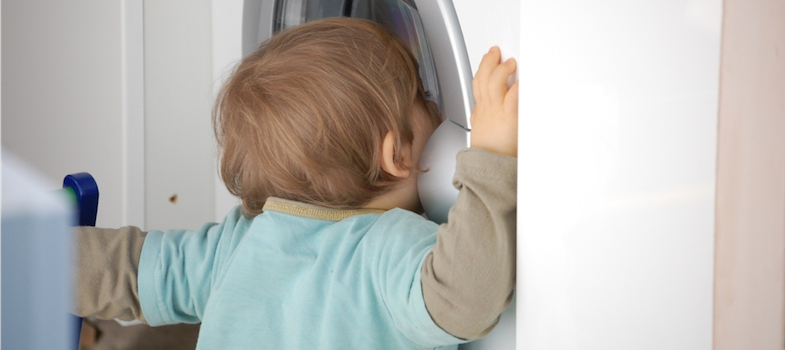Comment on Activity 3.1
Two of the videos in activity 2.1 show the child primarily playing with a particular item. In one it is farm animals and in the other it is bricks. It is likely these are the objects you would have chosen to photograph. However, you may have chosen to have photographed all of the animals and just some of the bricks, perhaps of different colours or size or perhaps as a tower or spread out. Similarly you would have had to have decided whether to photograph the animals all together or individually. You may also have photographed the child playing with each one. Your decision might also be influenced by how many other objects you were going to photograph and share that day. There were other objects in the videos which you may have chosen, for example the red plastic head on the bed amongst the bricks and the brown plastic half pipe that the child was pushing the animals into. In an everyday situation of course, you would not simply be spending a minute or two with the child and so there would be a greater variety of objects for you to choose from. For example, in the slightly longer video, you might have chosen to photograph the bricks and shape posting game, the telephone or parts of the phone, the baby in the basket and the books which he pushed away with his feet. It is also useful to look around the child’s environment to see other things which may be catching their attention above and beyond obvious play items. In the Introduction video in Section 1 Jonathan Rix recalls the example of Dad’s boots, and so similarly in any home context there will many possibilities.
You can also experiment with the use of photographs because perspectives In-the-Picture is a flexible approach. One practitioner talked about taking a photograph through a magnifying glass as the child had been looking at objects through it. Others talked about taking pictures from the angle the child would be looking at the item. Another Portage Home Visitor talked about how she had written her initials on the back of jigsaw pieces and that this appeared to interest the child so she took pictures of the back of the puzzle. Some practitioners found that the child was more interested in a picture of a whole scene and so with some take pictures of an activity the child was involved in rather than the object. There has been discussion too about using the object itself rather than a picture of it, particularly for those children who prefer to communicate through touch. As with each perspective of In-the-Picture, what works for you and for a particular child varies across time and situation and will require an open-minded, experimental and reflective approach. It really helps if you keep asking questions about what you are doing, how and why.
